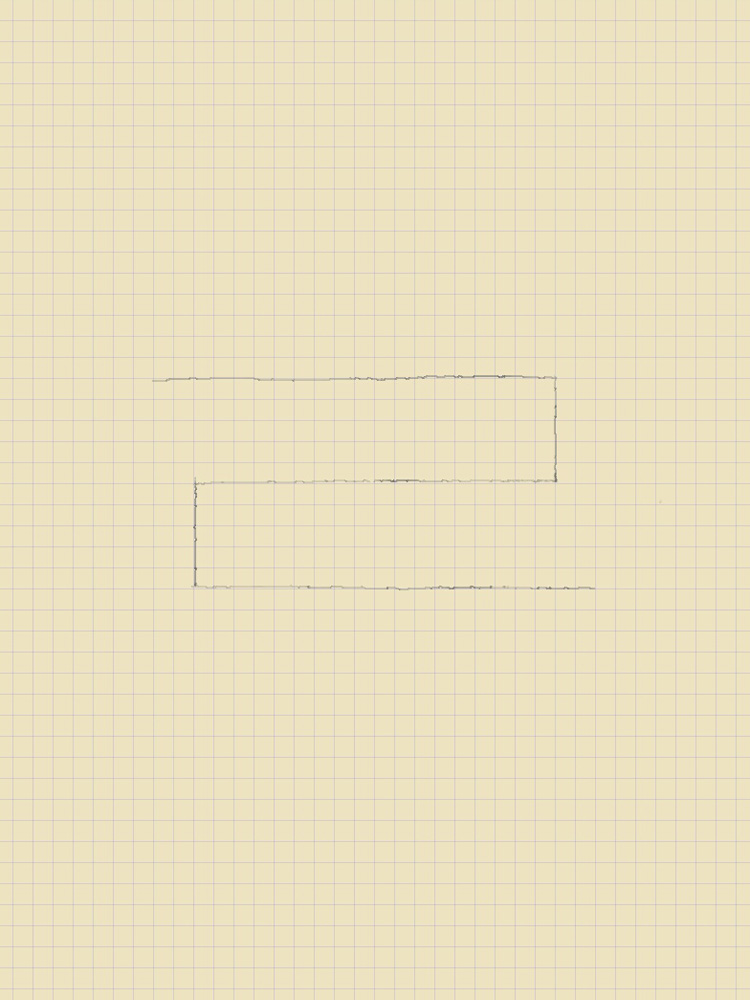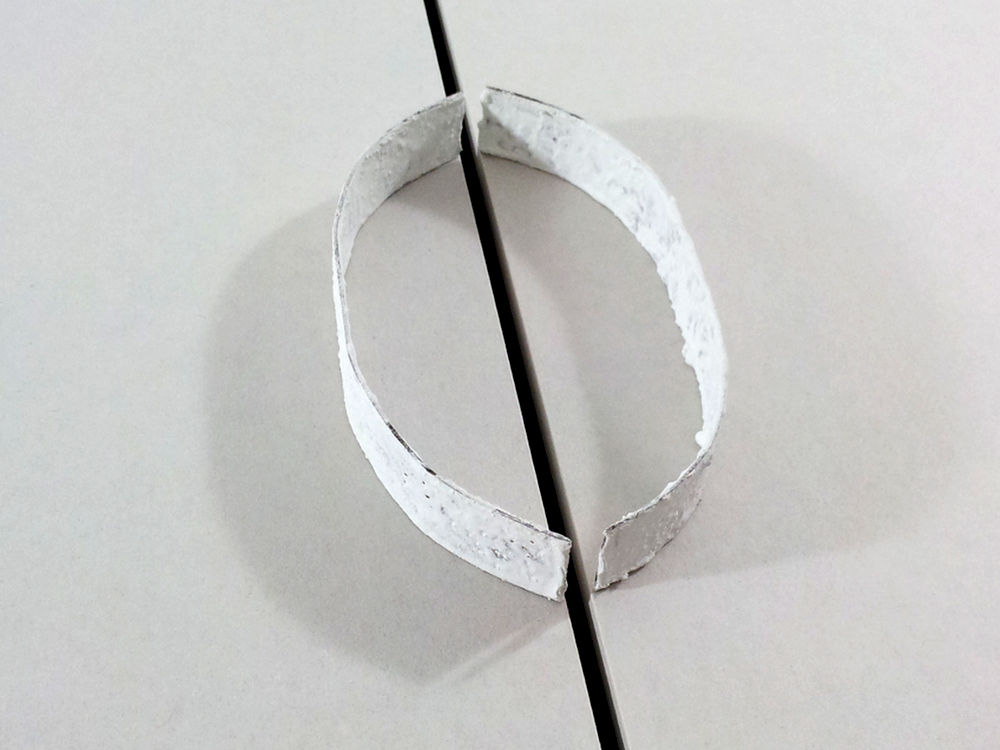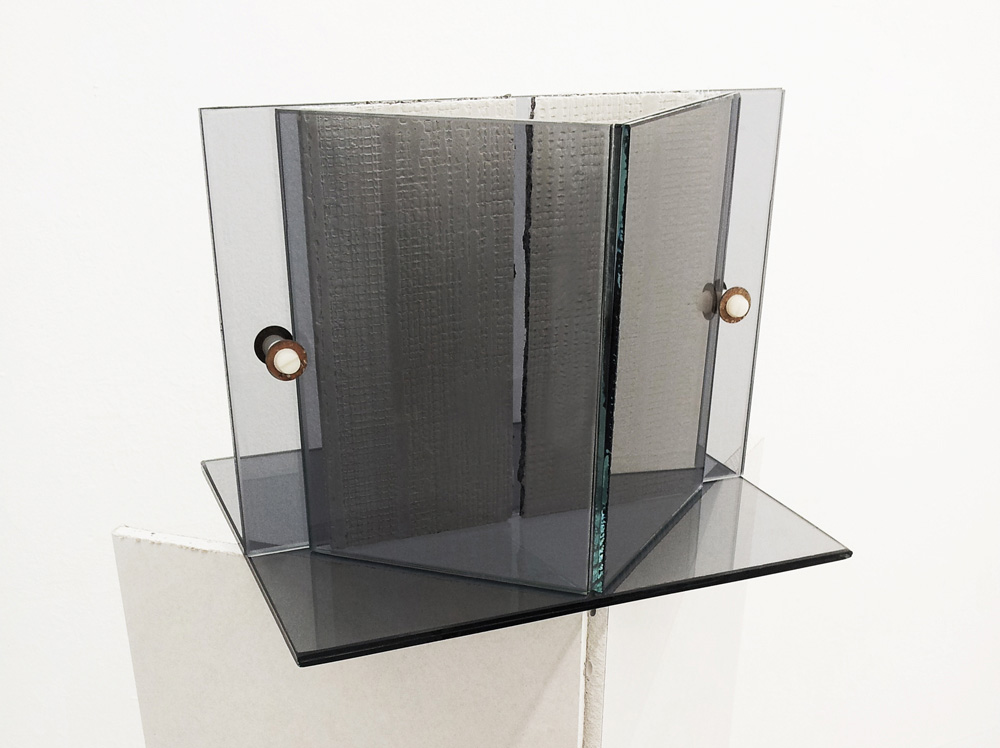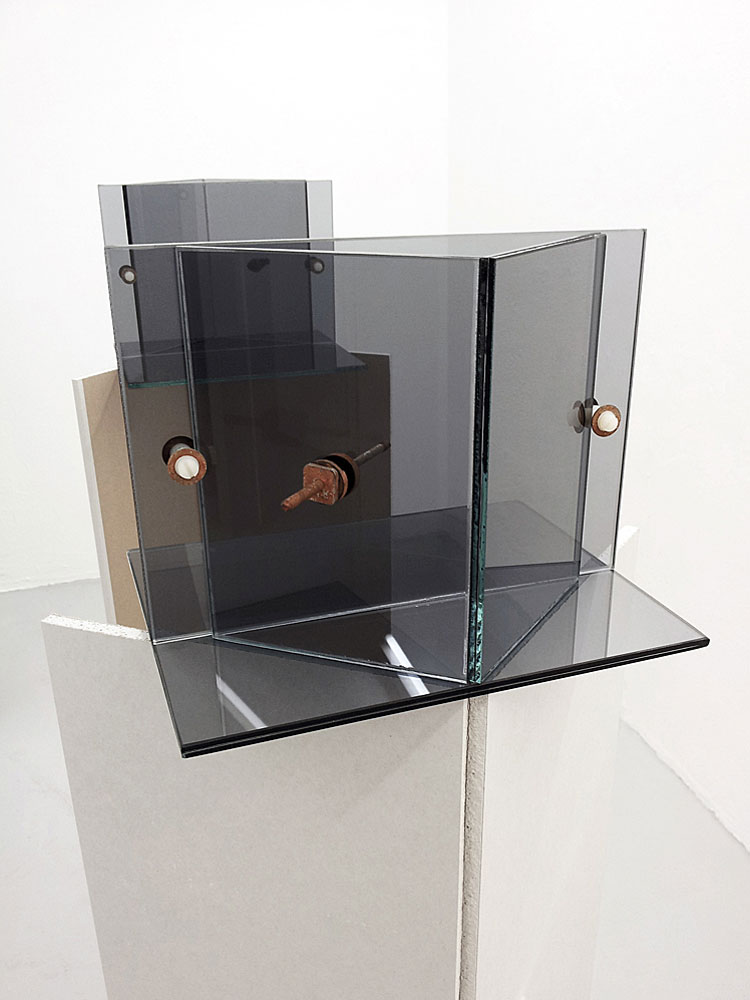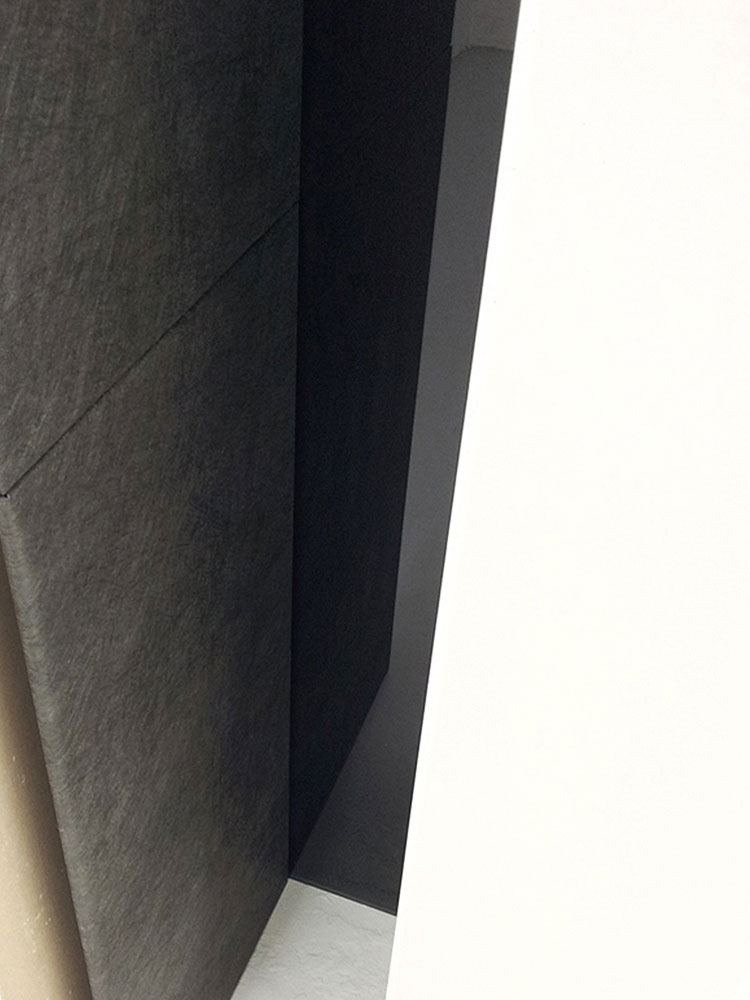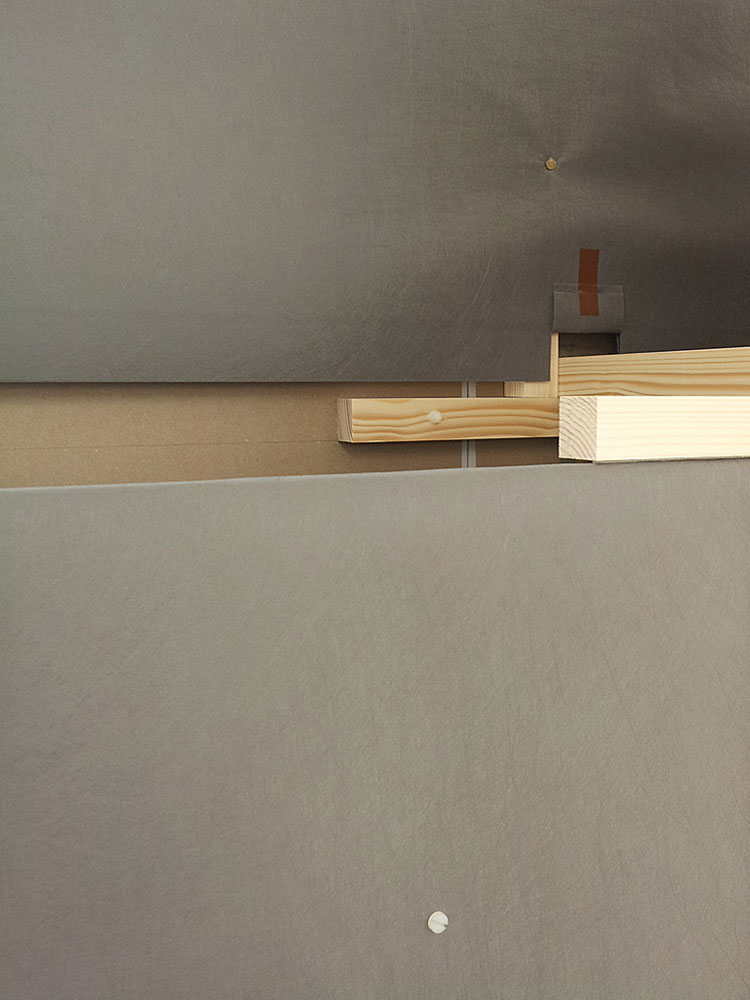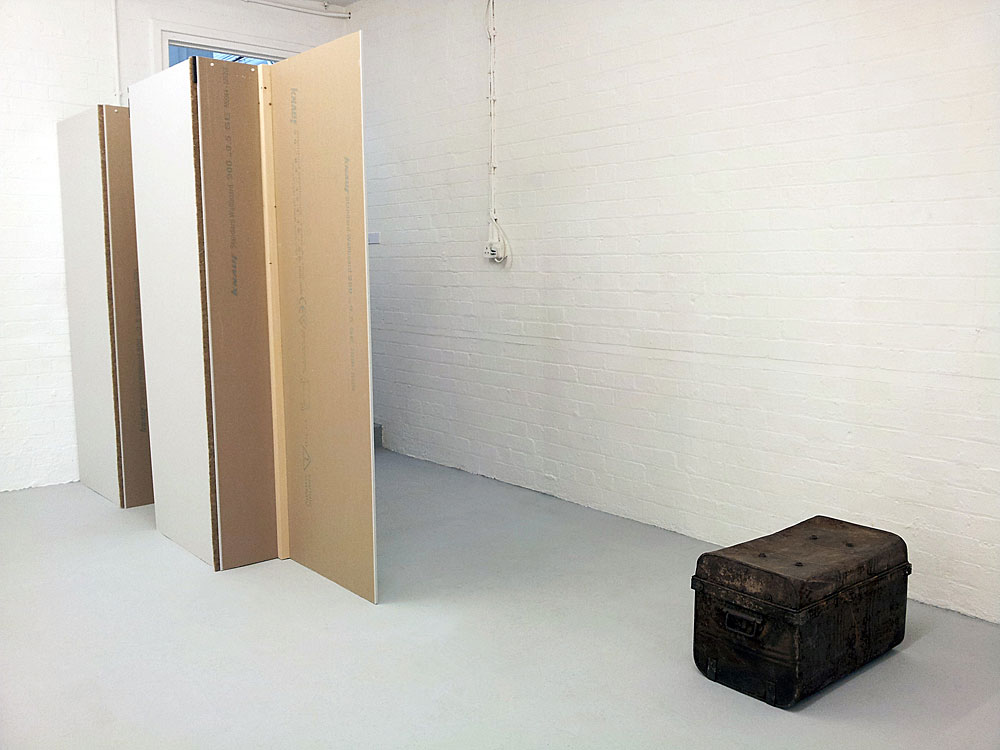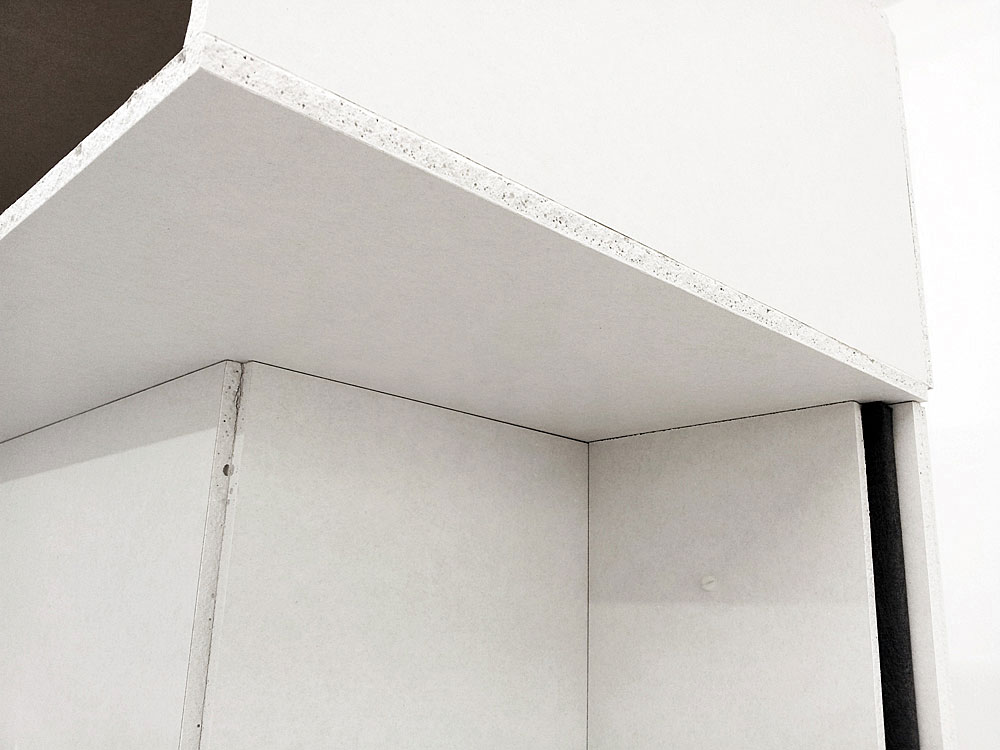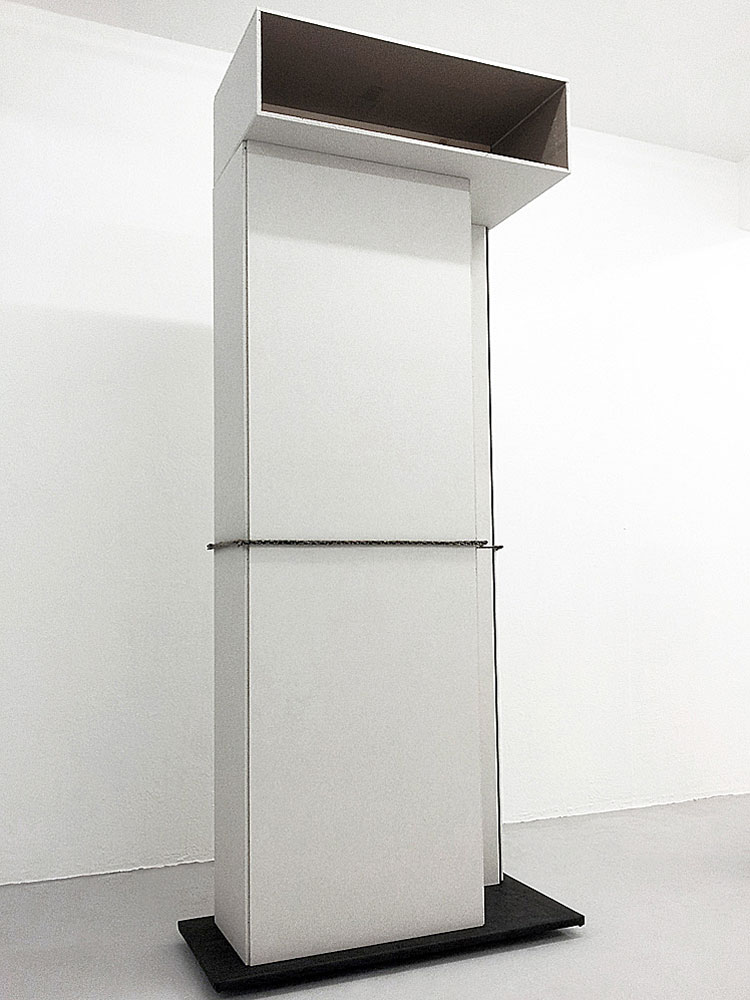text

BOXING ONESELF IN
Time is running down. To remember is to ascertain a glimpse of the past, which resides in a simultaneous approximation of distant and present memory. The body is a malleable vessel, a soft machine, which is in a constant metamorphosis negotiating sensory stimulation. My body serves as the centre for the making of art through its physicality and history. Through this centralising of the body, the artist is engaged with one’s sense of self, a conceptual device that has the propensity to transform from one material state into another.
Within my current studio practice, the centrality of the body in connection to the sensation of memory has become seminal in how material is being utilised and processed. The simultaneous relationship between the internal and external condition of the current installation work indicates a state of flux, a liminal threshold of building up and stripping down. The process of construction is conceived through a new inaudible language I refer to as ‘urbaglyphs’, which communicate ideas of supplanted memory within the built environment. Coded language is layered within the making of my art, encompassing questions of origin and the minor within the major.
This new language, which has a dialectical duality, initiates a sequence of memory through journeying and collecting in relation to childhood and personal urban archaeology. A language that is developed from the streetscape and hidden spaces of the city, from surfaces and areas that are incidental and often forgotten. Its role in my artistic process is one of semiology and the other as a generator of form.
The premise of the work is to stimulate the onlooker’s consciousness through direct experience, an exploration of phenomenology to see whether or not it can operate on a personal and collective plateau. Another aim is to elicit a response not through monumentality but through an awareness of process. Process begins its complicity in the visual and physical experience of material as the art object is created.
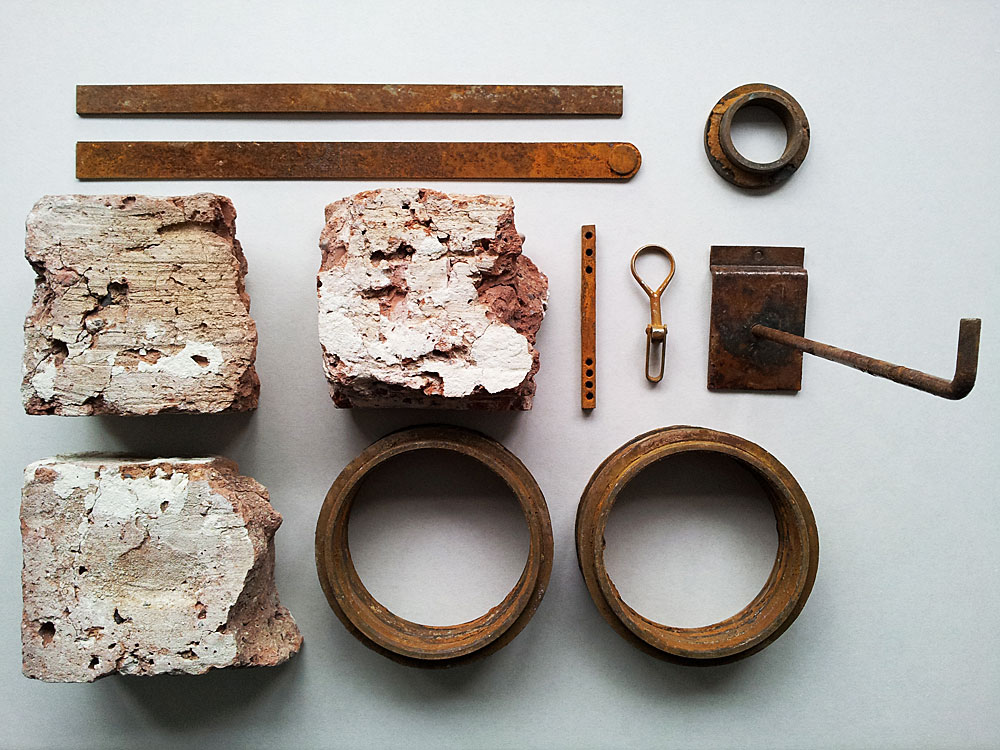
COLLECTING TO ARCHIVE AND BUILD
Through walking and collecting derelict or relegated material one gains a level of empathy and ownership of entropy, entropy in this case being defined as something transforming from one state to another. Through this ownership a mode of archiving has occurred creating a sense of attachment of myself as the artist to the found object.
The exercise of journeying and collating creates an awareness of place and geography. The breadth of memory is engaged through associated patterns of movement and observation. Through recycling, reconfiguring and rebuilding I am engaged with the past. Porous material such as metal has the ability to convey its individual history. On the surface, time has laced its skin with a lost referential melancholy, as in the natural aging process of the human body. This tonality is a factor within the composition of the artwork with regard to the treatment of its surface.
Found brick is entropic. It still retains the physical capacity to be transformed from a derelict state to a state of meaning. The urbaglyph takes on the role of transforming the brick into a sculptural word within the structural sentence of memory.
















